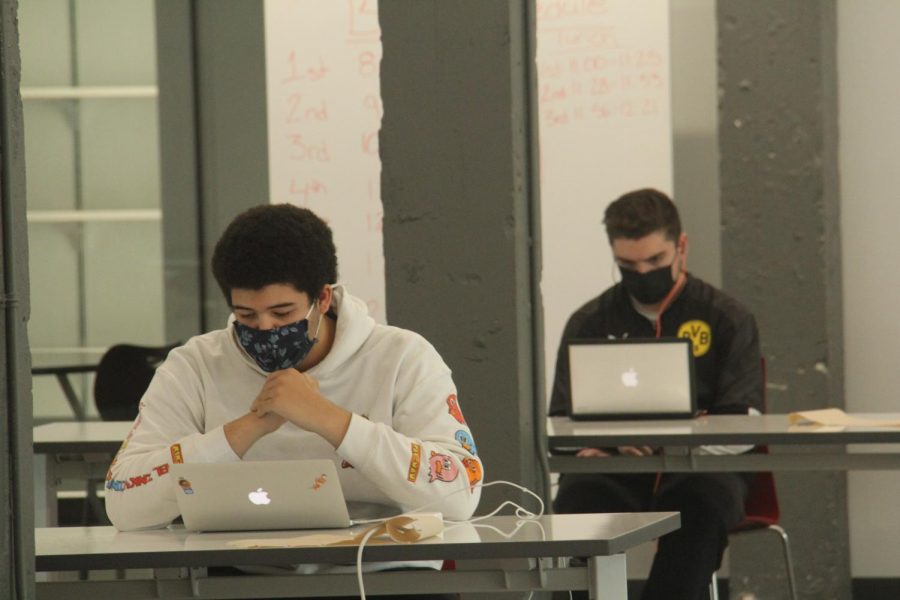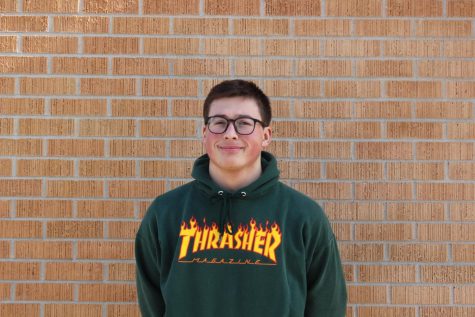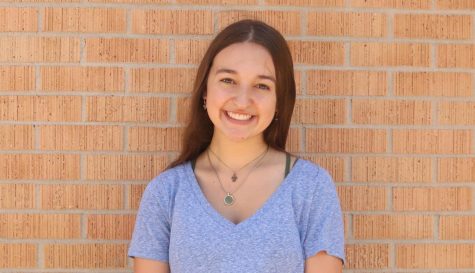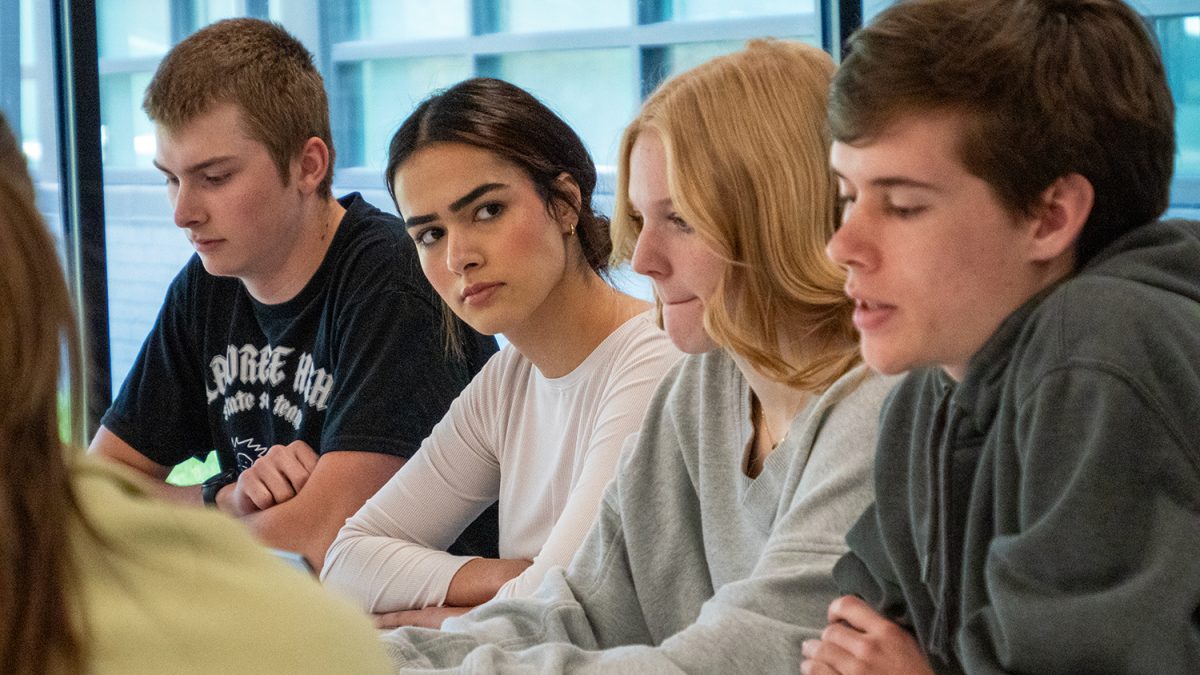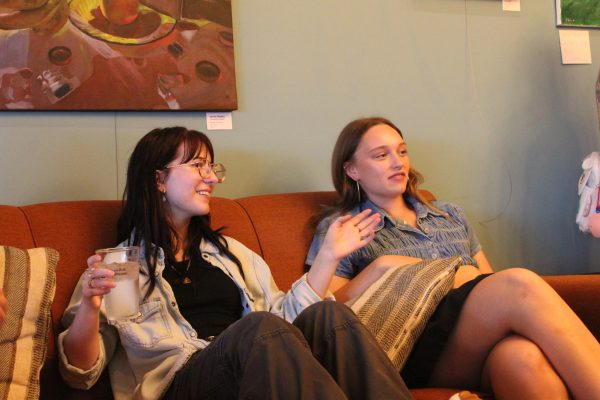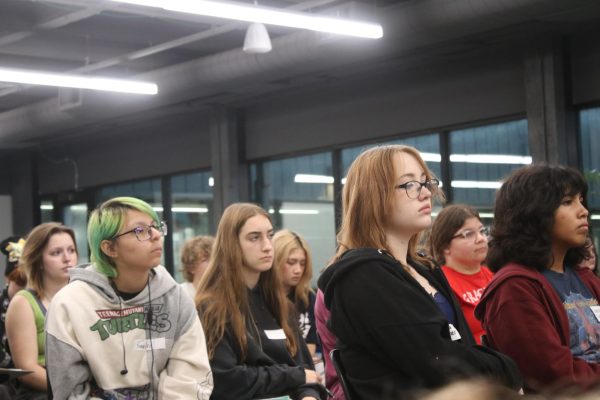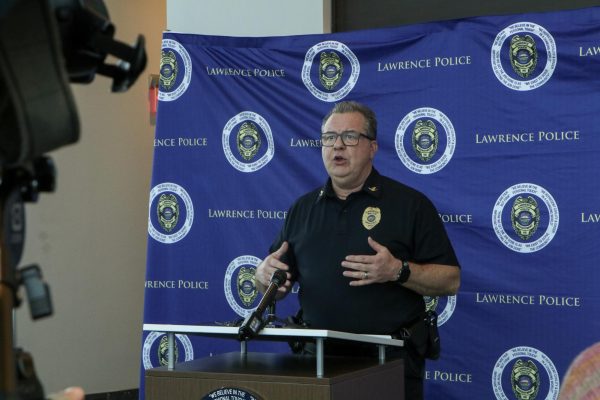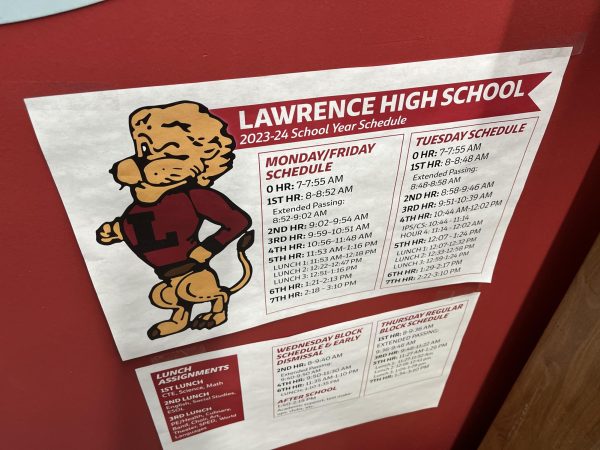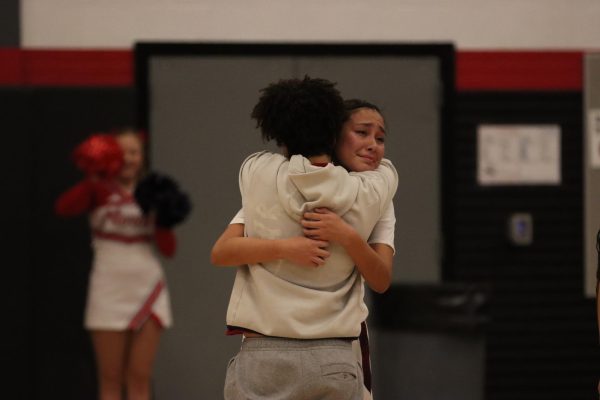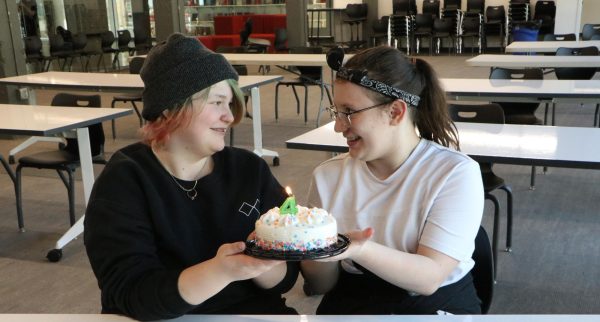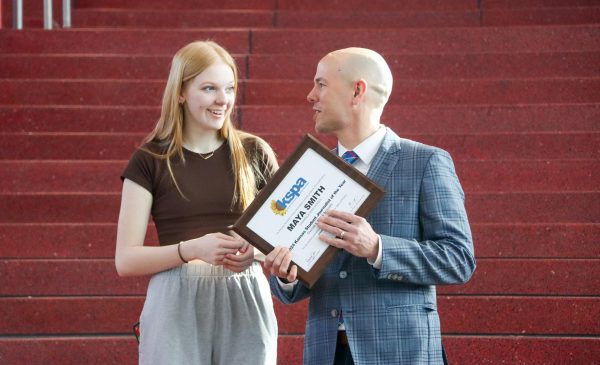Distance directives changed as USD 497 prepares for more students
District disregards CDC guidance in favor of a more lenient distancing guidelines that allow more students in the building
Students work in the learning commons following the original CDC guidance of six-foot distancing.
March 25, 2021
Editor’s note: Edits were made on March 26 to the headline and first two paragraphs of this story and the next to last paragraph to clarify information for readers.
As secondary students return to the building five days a week for the first time in over a year, the district is still encouraging distance but has relaxed its rules.
Students returning to school next week will not be required to maintain a six-foot distance from others or even the CDC’s newly recommended three feet of distance in classrooms. Room capacity signs on LHS classrooms were removed this week although the district says distancing should be adhered to when possible. Previously, teachers sent some students to the cafeteria or Learning Commons if they couldn’t maintain six feet of distance in their rooms, but were told this week that students would stay in classrooms going forward.
“As much social distancing as possible means if six feet is possible, then six feet,” Julie Boyle, executive director of communications, said in an email. “If it isn’t possible given the class enrollment and physical space, then the district expects as much distancing as is possible to be in place.”
The CDC last week reduced its distancing guidelines for most school settings to three feet with the exception for communities where transmission rates are high or during times when wearing a mask isn’t possible, such as lunch. The CDC currently says the spread in Douglas County is down to a “moderate” level.
“CDC is committed to leading with science and updating our guidance as new evidence emerges,” CDC Director Rochelle P. Walensky in a statement with the new guidance. “Safe in-person instruction gives our kids access to critical social and mental health services that prepare them for the future, in addition to the education they need to succeed. These updated recommendations provide the evidence-based roadmap to help schools reopen safely, and remain open, for in-person instruction.”
Lawrence has seen an improvement in case numbers and a decreasing spread of COVID-19, signs that it is becoming safer to have more students in school after months of hybrid learning, which began in October. Last month, hybrid LHS students returned to the building two days a week. The change is also coming at a point when most USD 497 employees who want to be vaccinated have received at least their first dose.
“We are encouraged by the downward trend in COVID spread in the Douglas County community and our school district, successful adherence to our in-school safety measures, and our staff vaccination prioritization process,” Boyle said.
A big factor in the decision to have students return comes from parents and school officials worried about the mental health and academic progress of students. During the first semester of this year, the number of students earning Ds and Fs at LHS increased by 6.8 percentage points, according to information shared at a school board meeting. In addition to the rise in failing grades, the district is well aware of how virtual learning impacts the mental health of students.
A number of students are looking forward to next week. For many, it will be their first time coming back to school since before spring break last year. Lawrence High’s other COVID safety protocols will remain the same.
Those precautions include:
- Wearing masks
- Temperature check
- Recently added air purifiers
- Sanitation supplies
“I think that as long as everyone is at their own table and relatively spread apart, I will still feel safe at school,” senior Emma-Frances Smith said. “As long as everyone keeps their mask on, the strict six-feet distance won’t need to be enforced.”
Some teachers worry about the change. Teachers who up to this point have typically had only a handful of students in their rooms will now have to accommodate all students who come to class, even if they have to sit closer than three feet from each other.
“You know, anytime you get groups of people together in close proximity, you increase the risk of COVID,” said Jeff Plinsky, the debate coach and vice president of the LEA. “The research suggests that as long as masked mandates are strictly adhered to and other hygienic steps are engaged in as well, that that risk is no higher than it is anywhere else in the community. I’m not quite sure whether that’s what we will see play out. Certainly, there are fears that it won’t play out that way, but there are hopes that it will.”
Tony Racy and Cuyler Dunn contributed to this report.



